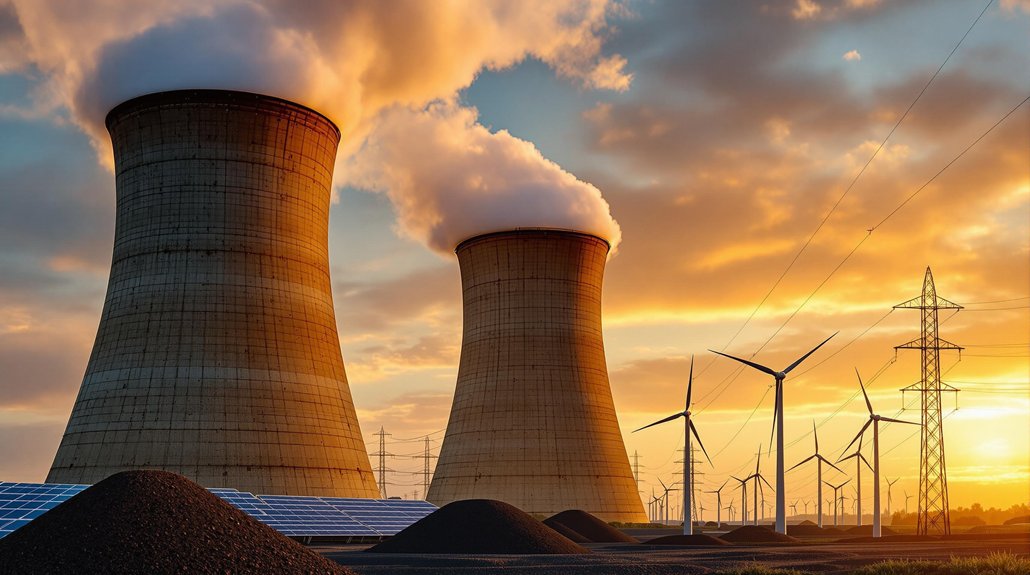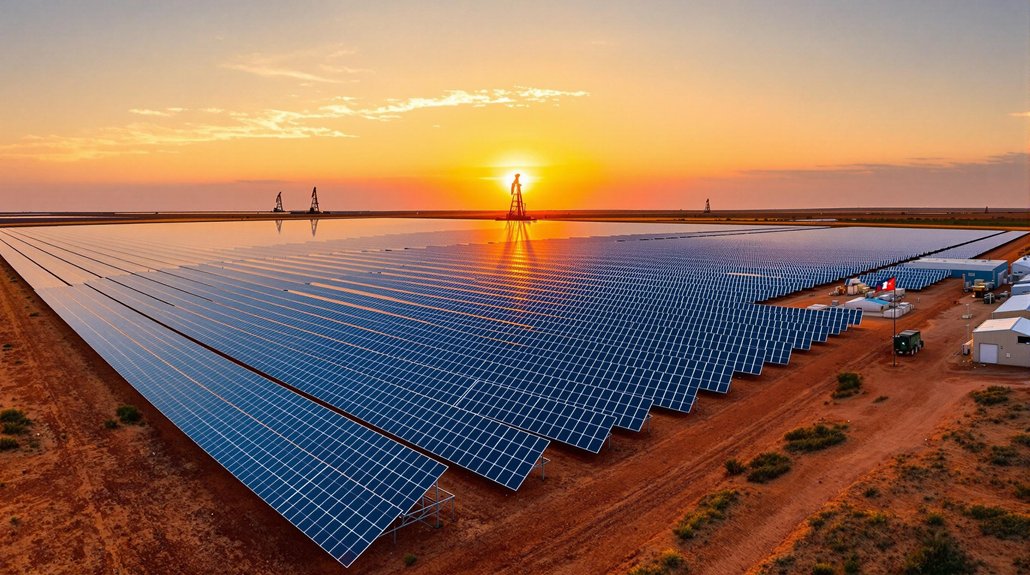Texas researchers have released a concerning report about the state’s energy future. A halt in renewable energy growth could lead to 14% higher wholesale power prices by 2035. Household electricity bills might increase by 10%. The economic impact could exceed $5 billion statewide. With Texas facing growing energy demands, this slowdown threatens its ability to attract energy-intensive industries. The state now faces critical choices about how to maintain its competitive edge while meeting expanding power needs.
Several major challenges are threatening the expansion of renewable energy in Texas, potentially leading to serious economic and reliability consequences. Recent studies show that if renewable energy development stalls, Texas could see wholesale power prices jump by 14% by 2035. This translates to about a 10% increase in household power bills, putting financial strain on Texas families.
The economic impact extends beyond homes to businesses as well. Industrial energy users might face up to $6.3 million more in annual costs due to higher energy prices. System-wide costs across the Texas grid could increase by more than $5 billion without continued renewables expansion, affecting the state’s overall economic health.
Texas businesses face millions in added costs as grid-wide expenses could soar beyond $5 billion without renewable growth.
Grid reliability is another major concern. Research suggests that limiting renewable energy growth could leave as many as 620,000 homes without electricity during extreme heat events. The state has already demonstrated impressive renewable production with 136,118 gigawatt-hours from wind and solar generated in 2022. This is particularly troubling as Texas continues to experience record-breaking temperatures and growing energy demands from expanding industries like data centers and AI facilities.
The state faces regulatory and infrastructure barriers that complicate the situation. The existing grid was designed primarily for fossil fuels, making integration of utility-scale wind and solar more difficult. Texas Association of Business advocates for all-of-the-above energy strategy that promotes innovation while maintaining grid reliability. Permitting processes are slow and complex, especially for large renewable projects that must navigate environmental regulations protecting species and heritage trees.
Texas’ energy demands continue to rise rapidly due to population growth and industrial expansion. Without new renewable capacity, the state may struggle to meet these growing needs as older conventional plants retire. This supply gap could strain the system during future peak demand periods.
The consequences extend to Texas’ competitive position in attracting new businesses. Energy-intensive industries may look elsewhere if the state can’t provide reliable, affordable power. As neighboring states invest in grid modernization and clean energy, Texas risks falling behind in innovation and economic opportunity if it halts the momentum of renewable energy development. The challenge mirrors global trends, where renewables are projected to supply 46% of electricity worldwide by 2030, showing the economic disadvantage Texas could face by resisting this transition.








